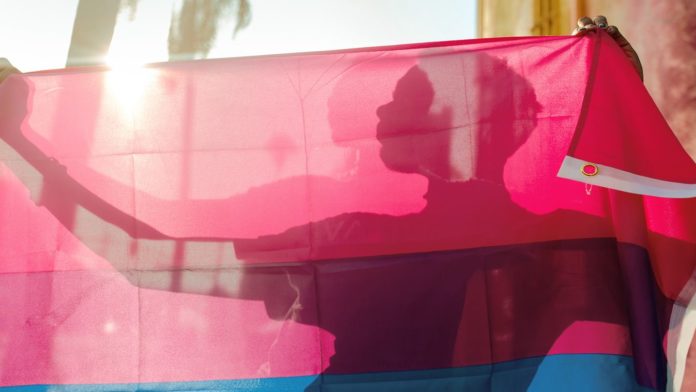
Nearly half of multiracial LGBTQ+ youth seriously considered suicide in the past year.
Those are the new findings in a report published this month by the LGBTQ+ youth mental health organization the Trevor Project.
It’s been well established that LGBTQ+ youth are at increased risk for suicidal thoughts and suicide attempts compared with their straight and cisgender counterparts. But according to the Trevor Project, this research is among the first to consider how the intersectionality of identifying with more than one ethnic or racial identity affects suicide risk.
“To our knowledge, this new report is the first of its kind to exclusively explore the mental health and well-being of multiracial youth who are LGBTQ, highlighting their unique mental health experiences, risk factors, and protective factors,” says Myeshia Price, PhD, the director of research science at the Trevor Project, who is a coauthor of the report.
For the new research, 33,993 LGBTQ individuals ages 13 to 24 answered online surveys in late 2021; 4,379 reported that they identified with more than one race or ethnicity.
Across nearly all the questions about feelings of anxiety and depression, suicidal thoughts, and suicide attempts, the young people who identified as multiracial were at higher risk than those who identified as monoracial. In most cases, those who identified as exclusively a youth of color had a higher risk than those who identified as white and another race or ethnicity.
The data showed that when it came to suicide risk:
- 48 percent of the multiracial youth reported seriously considering suicide within the past year, compared with 44 percent of those who identified as monoracial
- 17 percent of the multiracial youth reported attempting suicide within the past year, compared with 14 percent of those who identified as monoracial
Among those who identified as more than one race or ethnicity:
- 52 percent who reported being exclusively a youth of color said they had seriously considered suicide in the past year, compared with 47 percent of those who identified as white and another race or ethnicity
- 21 percent who reported being exclusively a youth of color said they had attempted suicide in the past year, compared with 16 percent of those who identified as white and another race or ethnicity
The data also showed that multiracial youth were slightly more likely to report having had feelings of anxiety in the two weeks before taking the survey than monoracial youth (75 versus 72 percent). And among the multiracial youth, those who identified as exclusively a youth of color were slightly more likely to have such feelings than their peers who identified as white and another race or ethnicity.
The trend was the same for youth who reported having feelings of depression in the prior two weeks: 60 percent of multiracial youth reported having such feelings, compared with 57 percent of monoracial youth; and 66 percent of those who identified exclusively as a youth of color reported having such feelings, compared with 59 percent of those who identified as white and another race or ethnicity.
More Insight on Intersectionality of Being LGBTQ+ and Multiracial
Previous evidence showed the steep disparity in suicide risk for LGBTQ+ youth compared with heterosexual and cisgender youth.
Data published in 2020 by the Centers for Disease Control and Prevention (CDC) showed that lesbian, gay, and bisexual high school students were at higher risk of suicidal thoughts and suicide attempts from 2015 to 2019 than their heterosexual peers. Another nationwide survey of high school students, published in 2018 by the CDC, found that while 13.3 percent of heterosexual students reported having seriously considered suicide, 47.7 percent of lesbian, gay, and bisexual students had.
Neither of those reports, however, collected the same detail when it came to racial and ethnic identity as the new research from the Trevor Project, nor did they analyze suicide risk by the intersectionality of identifying as multiracial and being LGBTQ.
“Research like this plays a critical role in helping foster our understanding of the unique experiences of LGBTQ people with intersectional identities that have not been explored in the past,” Dr. Price says. “Once we have research that allows us to better understand where the greatest need and disparities exist, it helps us set a road map and path forward for addressing them through evidence-based action.”
Determining How to Better Address Mental Health Needs for These Youth
Understanding what’s causing these disparities is a key step in solving the problem, Price says.
“The findings of this report also suggest that mental health interventions may need to be tailored to specifically address the needs of multicultural youth who are exclusively youth of color and their unique risk factors — such as higher rates of racial discrimination — to ensure they are salient to these youth,” they add.
The new data from the Trevor Project found that 31 percent of multiracial LGBTQ youth had experienced homelessness in the past or had experienced food insecurity in the past month. More than three quarters (77 percent) reported experiencing discrimination based on their sexual orientation or gender identity in the past year, and 39 percent experienced discrimination because of their race or ethnicity. More than two-thirds had also been physically threatened or harmed because of their sexual orientation or gender identity.
Similar findings came from a 2017 University of Chicago report, which showed that young people who identified as LGBT were at higher risk of homelessness than straight and cisgender youth; and LGBT youth were found to have a 120 percent higher risk of homelessness than non-LGBT youth, in a nationally representative survey sample of more than 4,000 individuals ages 13 to 25.
“It is critical that we invest in mental health services and prevention programs that are attuned to the nuanced ways in which multiracial LGBTQ youth navigate and experience the world,” Price says.
Another important finding from the report is that social support from family, friends, and schools significantly lowered suicide risk for LGBTQ young people.
The survey found that multiracial LGBTQ youth who reported high levels of social support from family were 55 percent less likely to attempt suicide in past year. If a multiracial LGBTQ youth attended an LGBTQ-affirming school, it reduced their risk of a suicide attempt in the past year by 33 percent.
Another 2021 report from the Trevor Project found that all levels of respect and affirmation, such as respecting preferred pronouns or being able to change a name on legal documents — significantly reduced LGBTQ youth’s suicidality.
Wayne Pearson, LICSW, an adolescent and young adult psychotherapist at Fenway Health, a Boston-based healthcare center that specializes in caring for LGBTQ+ individuals, says that if you know someone who is struggling with their mental health, let them know that they can talk to you and have an open and honest conversation.
“Giving that person the time and space to have these difficult conversations is important,” he says. “A lot of times people considering suicide feel as though they’re alone, and having someone to help identify that I hear you, I see you, and I value you is really important.”








